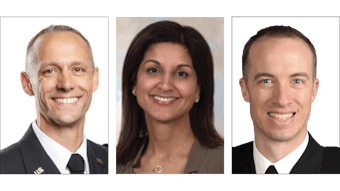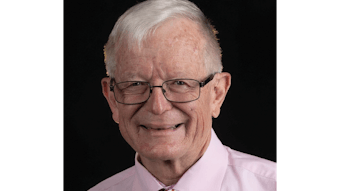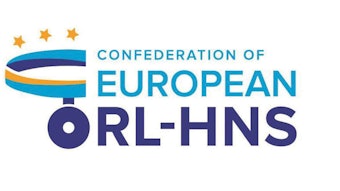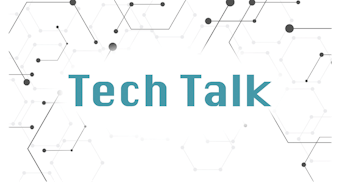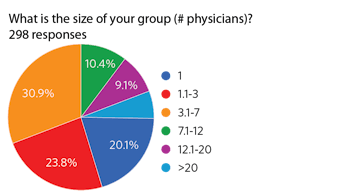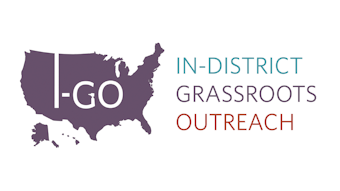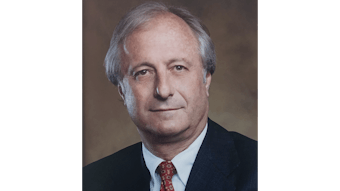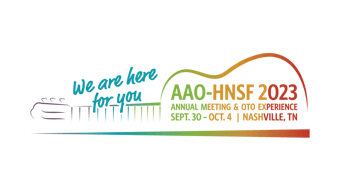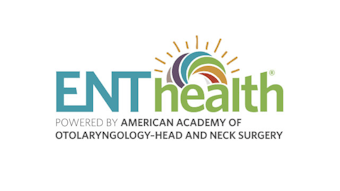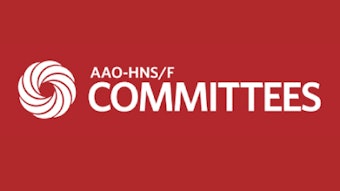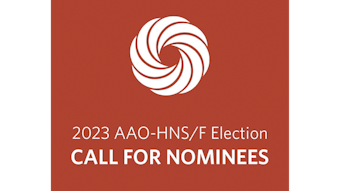OUT OF COMMITTEE: Otolaryngology Cleft and Craniofacial Introducing the Newest AAO-HNS Committee: The Otolaryngology Cleft and Craniofacial Committee
Our training in otolaryngology concentrates heavily on these outcomes and competencies, which enables otolaryngology-head and neck surgeons to the highest level of care for these complex patients.
Brianne Barnett Roby, MD, Krishna G. Patel, MD, PhD,
and Rajanya S. Petersson, MD
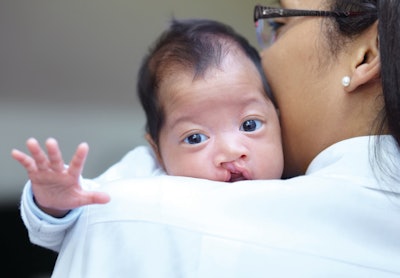
A 10-person Task Force on Cleft and Craniofacial Surgery within the AAO-HNS was established in 2019 consisting of Sydney C. Butts, MD, Patrick J. Byrne, MD, Steven L. Goudy, MD, Larry D. Hartzell, MD, Laura E. Hetzler, MD, Krishna G. Patel, MD, PhD, Rajanya S. Petersson, MD, Brianne Barnett Roby, MD, Andrew R. Scott, MD, and Travis T. Tollefson, MD, MPH. In fall 2021, we learned the task force would be recognized as an official committee. After two years of demonstrated effort, the new committee was formed with an intentional selection of a diverse mix of pediatric otolaryngologists and facial plastic and reconstructive surgeons from around the country who specialize in the care of patients with cleft and other complex craniofacial abnormalities.
The newly formed committee built upon the task force’s vision on research, education, strategy, humanitarian efforts, and increasing awareness of cleft and craniofacial care within otolaryngology. This includes creating presentations at the AAO-HNSF Annual Meeting, applying for National Institutes of Health funding, and having multiple publications within the AAO-HNSF's journal, Otolaryngology–Head and Neck Surgery. In terms of support for otolaryngologist-head and neck cleft surgeons and our patients, a WhatsApp group, including over 85 head and neck cleft surgeons, was created to allow for discussion and facilitate referrals when our patients move across the country.
Importantly, the members of this committee are passionate about increasing awareness of the care for complex patients with cleft and craniofacial differences and recognizing that otolaryngologists are well suited to care for these patients' needs. Many of these patients require care as newborns, and even prenatally, and will continue to require care into adulthood. Otolaryngologists are optimally positioned to advocate for the needs of such patients. Not only do otolaryngologists trained in cleft and craniofacial surgery demonstrate excellent outcomes, but they also have the background and training to treat the associated potential hearing, feeding, speech, and airway issues, allowing broad and comprehensive care for these patients. Otolaryngologists have often not been recognized for their cleft-related work and patient advocacy. Prior to the formation of this committee, acknowledging otolaryngology cleft care fell on individual cleft and craniofacial teams as there was no consolidated “home” to highlight these stories.
Currently, 10% of multidisciplinary cleft teams approved by of the American Cleft Palate-Craniofacial Association (ACPA) are directed by otolaryngologists. Training of residents and fellows in cleft care is required by the American Board of Otolaryngology - Head and Neck Surgery, yet there has not been a cohesive interdisciplinary group that develops best practices and educational content related to the complex care and procedures these patients require. The goal of this committee is to demonstrate excellent outcomes, share best-care management strategies, and create a more consistent training strategy for residents and fellows, all while helping to support the increased involvement of otolaryngologists within cleft teams.
As a committee, we strive to continue improving communication within the otolaryngology-head and neck surgery cleft community, as optimizing communication allows us to provide the best care for our patients. We hope to develop training milestones that currently do not exist and educational materials for residents, fellows, and members of the AAO-HNS. And finally, by having the support of the AAO-HNS, we can best serve our patients with complex cleft and craniofacial differences from birth into adulthood by supporting our fellow otolaryngologist-head and neck surgery cleft surgeons.


